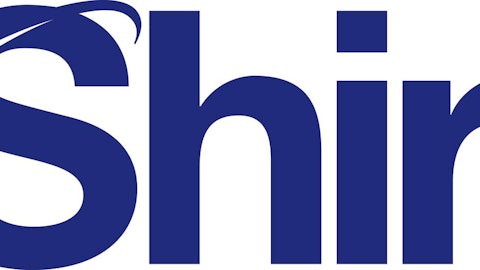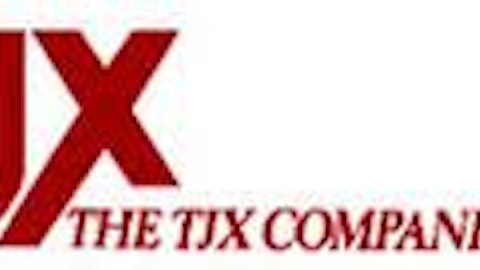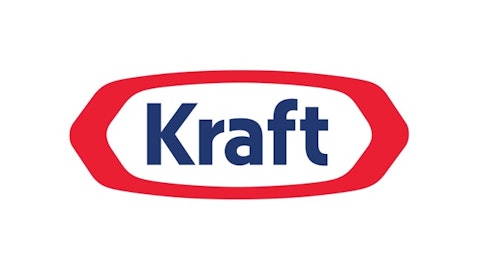
Such foresight requires discipline. Probably you’ll walk safely off the plane. But what happens if in the off chance it crashes?
During the 2008 financial panic, two CEOs took this disciplined approach — and capitalized on it.
Turning from subprime
A few notable company leaders are excellent at looking years into the future.
One great example comes from JPMorgan Chase & Co. (NYSE:JPM). A large reason for the investment bank’s success came from Jamie Dimon’s discipline. He decided to steer the bank away from subprime mortgages when other banks were still waist-deep.
Why would a CEO of one of the largest banks walk away from seemingly endless profits? Because Dimon wagered that sooner or later, subprime would melt down. And it did.
Just like a driver looking a mile ahead to see what’s in the distance, Dimon was able to spot a potential accident waiting to happen. And his foresight enabled JPMorgan Chase & Co. (NYSE:JPM) to swallow up Washington Mutual and Bear Stearns in the process, adding valuable customer deposits, human capital, and even real estate to JPMorgan Chase & Co. (NYSE:JPM)’s list of assets.
Test, test, test
In an opposite scenario, consider former J.C. Penney Company, Inc. (NYSE:JCP) CEO Ron Johnson. Since he took the department store’s helm on Nov. 1, 2011, J.C. Penney Company, Inc. (NYSE:JCP)‘s sales numbers have plummeted.
Johnson believed that retail was broken, and that the consumer knew value when he or she saw it. Thus, he nixed coupons and instituted “Fair and Square,” something like an “Everyday Low Price.”
But by eliminating coupons, I think that Johnson far overestimated the rationality of the everyday consumer. In order for Johnson’s plan to have succeeded, consumers would need to:
1. Correctly value a piece of merchandise
2. Be able to calculate the difference between the item’s value and Penney’s “Fair and Square” price.
That didn’t happen.
If Johnson had tested his theory, he would have been able to see this problem coming. But as he put it: “We didn’t test at Apple.”
There is a reason department stores offer coupons. If they didn’t, they’d be Wal-Mart. Or Dollar General. And what high-end brand wants to sell its goods in Dollar General?
When Johnson was hired, he said that he looked forward to his team being able to “transform the way America shops.” And he has; as my Grandmother said, until Penney’s brings back coupons, “I’ll shop at Kohl’s.”
Almost nine weeks ago, I received a coupon in the mail for Penney’s. It was for $10 off a purchase of $10 or more. I wonder if my Grandmother is willing to change her mind.

Looking Out 10+ Years
When it comes to planning for the future, one of the best examples I can think of is Warren Buffett. In 2009, Berkshire Hathaway Inc. (NYSE:BRK.B) snapped up railroad Burlington Northern Santa Fe.
Buffett looked at the economics of the railroad industry perhaps a decade or more into the future. He liked what he saw, and he pulled the trigger.
Taken from Berkshire Hathaway Inc. (NYSE:BRK.B)’s 2011 Shareholder Letter:
Measured by ton-miles, rail moves 42% of America’s inter-city freight, and BNSF moves more than any other railroad – about 37% of the industry total. A little math will tell you that about 15% of all inter-city ton-miles of freight in the U.S. is transported by BNSF. It is no exaggeration to characterize railroads as the circulatory system of our economy. Your railroad is the largest artery.
The media questioned the buy, but now Buffett’s acquisition is hailed as genius.
The same goes with Berkshire’s acquisition of H.J. Heinz Company (NYSE:HNZ). Why buy a company for almost 20% above its all-time high? Again, I think that Buffett is looking a decade into the future. I think he sees two things: stubbornly low interest rates in the short-term and high rates in the long-term.
Short-term, Buffett gets a 9% return on his $8 billion Heinz investment. And when inflation picks up, H.J. Heinz Company (NYSE:HNZ) will have pricing power because of its brand name. Furthermore, H.J. Heinz Company (NYSE:HNZ) will have scaled its investment in emerging markets. McKinsey estimatesthat just 440 emerging market cities over the next 15 years will be responsible for 50% of GDP growth and 40% of global consumption growth.
Bottom line
Few CEOs can make correct decisions based on their view 10 years into the future. Jamie Dimon gave up profits to hedge risk, and Buffett deployed capital when all around him were too scared to act.
When a CEO has the discipline to patiently take detailed notes on his surrounding environment, you should probably pay attention — because that CEO might just avoid the next crash.
The article 2 CEOs With the Foresight to Avoid Crashes originally appeared on Fool.com and is written by Chris Marasco.
Post written by ChrisMarasco who has no positions in any stocks mentioned. The Motley Fool recommends Berkshire Hathaway and H.J. Heinz Company. The Motley Fool owns shares of Berkshire Hathaway and JPMorgan Chase & Co. Chris is a member of The Motley Fool Blog Network — entries represent the personal opinion of the blogger and are not formally edited.
Copyright © 1995 – 2013 The Motley Fool, LLC. All rights reserved. The Motley Fool has a disclosure policy.



